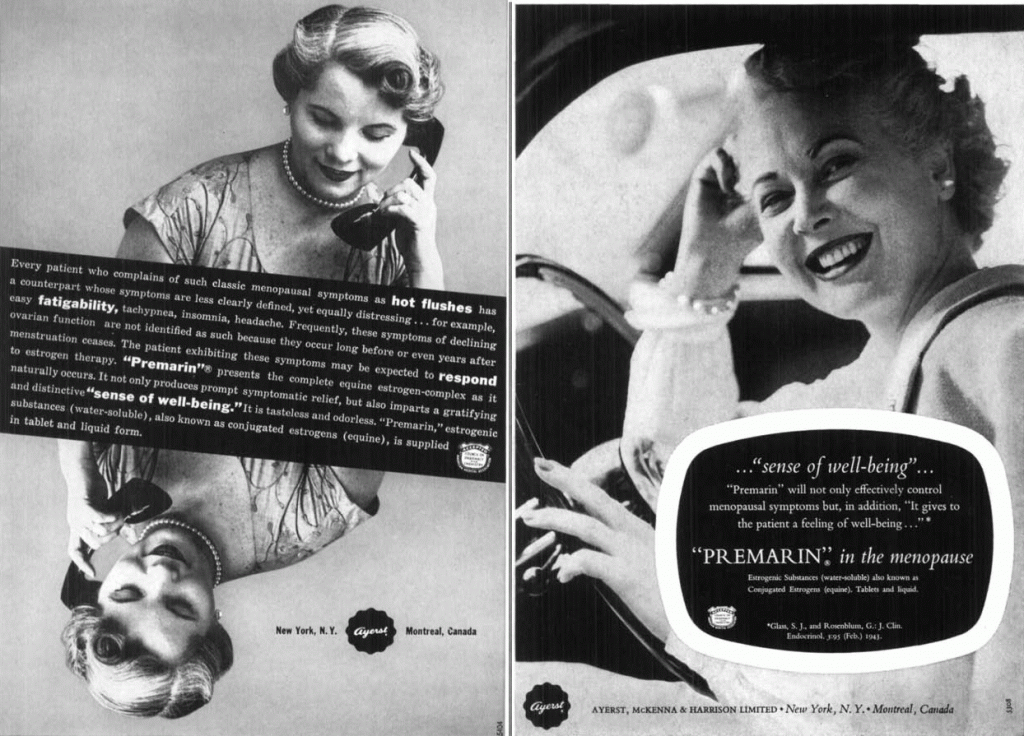Guyside: Getting testy about testosterone
 There’s no doubt that men think about the effects of aging on their bodies. And if there were, a viewing of ads for hair colouring, hair thickening agents, or erectile dysfunction drugs would quickly convince you. You could be a new man!
There’s no doubt that men think about the effects of aging on their bodies. And if there were, a viewing of ads for hair colouring, hair thickening agents, or erectile dysfunction drugs would quickly convince you. You could be a new man!
And as regular Flashfree readers will know, one of the things that’s been touted as a solution to the woes of the aging male is testosterone replacement therapy.
The basic idea is that men may have a condition that’s referred to as “Low T.” And so a gel, a patch, a tablet or an injection may bring you back to a more energetic, athletic, virile condition. The pitch has been made more and more convincingly, by all accounts: an Australian research team found that the sales of testsosterone treatments went from $150 million in 2001 to $1.8 billion in 2012.
That’s a 1200% increase. The Australian research indicated that the amount of testosterone being prescribed far outstripped the incidence of “male menopause” or andropause. So what’s going on? Oh, I suspect there’s a generous helping of vanity involved here.
But if it were simply a matter of making men feel better about themselves, it would just be a waste of money. A growing body of research evidence is suggesting that treating Low T may increase the risk of cardiac events. The most recent, an article from the open-access journal PLOS ONE, suggests a substantial increase in the risk of myocardial infarction — what we normally refer to as a heart attack — with the use of testosterone, for men under and over 65 years of age.
I’m sure there are men with diagnostic criteria that would make testosterone therapy an appropriate choice, with a careful calculation of the risks and benefits. But if my hair’s getting a little thin, if I’m not feeling as “macho” as I once was — do I really want to be using a hormone supplement that could put me at risk of a heart attack?
It’s very easy to succumb to marketing-based pitches that appeal to what we think we need as men. But it’s important for us to not jump at those pitches without thinking about the risks and the benefits carefully.
There was a rush to use estrogen and progesterone to help women with symptoms of menopause several years ago, and then a panic when those therapies were associated with increased cardiac symptoms.
I’m no doctor, and I’m certainly not saying that nobody should be using hormones in this way. But I do think that we should think through ALL of our medical decisions and ensure we’re taking the risks seriously.
(photo: CC-licenced image by Flickr user Ed Schipul)
Read MoreWednesday Bubble: U.S. Preventive Services Task Force Recommends Against Use of Hormone Therapy for Chronic Disease Prevention
I just can’t help myself. It’s Monday. But this news item calls for a Wednesday Bubble. And yet another nail in the HRT coffin.
The U.S. Preventive Services Task Force (USPSTF) issued an update to its 2005 statement on hormonal therapy late this afternoon. It reads:
“The U.S. Preventive Services Task Force (USPSTF) recommends against the use of of combined estrogen and progestin for the prevention of chronic conditions in postmenopausal women” (evidence grade D – There is moderate or high certainty that the service has no net benefit or that the harms outweigh the benefits).
“The USPTF recommends against the use of of estrogen for the prevention of chronic conditions in postmenopausal women who have had a hysterectomy (D recommendation).
Wondering what this means?
The USPTF recommendations are clear that they refer to the use of HRT and hormone therapy for the purpose of reducing a woman’s risk of developing certain chronic diseases, such as heart disease or dementia and not for the purpose of treating considering hormone therapy for menopausal symptoms such as hot flashes or vaginal dryness/atrophy. However, they are also clear about the data that explores the use of hormone therapy for chronic diseases, noting that while combined HRT has been shown to decrease the risk for fractures, this decline is accompanied by an increase in the risk for serious events that include:
- stroke
- invasive breast cancer
- dementia
- gallbladder disease
- blood clots in the veins or lungs
Additionally, they report that data do not demonstrate a decrease in heart disease and even show an increased likelihood — 1.22 times the norm — for some type of heart event.
For estrogen alone, they again note the benefits in terms of fracture reductions and even a small decline in risk of developing or dying from invasive breast cancer (e.g. 8 fewer cases or 2 fewer deaths per 10,000 person years). However, estrogen-alone has also been associated with “important harms” including:
- stroke
- blood clots in the veins
- gallbladder disease
Like combined hormone therapy, estrogen alone does not reduce the risk for coronary heart disease.
The Task Force also points out that both forms of hormone therapy have been associated with an increased incidence of stress, mixed or urge urinary incontinence after one year.
Mind you, naysayers will say that the average age of women participating in the Women’s Health Initiative were a bit older than the vast majority of women who are transitioning through menopause. To a certain extent, the Task Force agrees, calling for “new research to help better define whether there is a differential balance of benefits and harms based on age at initiation, duration of use and dose or delivery mechanism. Still, they conclude with “high certainty that there is zero to negative net benefit for the use of combined estrogen and progestin therapy for the prevention of chronic conditions and concludes with moderate certainty that there is no net benefit for use of estrogen alone.” Moreover, major health organizations are aligned with the new recommendations. For example, the American Heart Association and American Congress of Obstetricians and Gynecologists recommend against using hormonal therapy to prevent heart disease. The Canadian Task Force on Preventive Health Care and American Academy of Family Physicians are totally aligned with the USPSTF in terms of the use of hormonal therapy to prevent chronic illness in postmenopausal women. Even the North American Menopause Society, a huge proponent of hormone therapy, does not believe that hormones should be used to protect the heart or prevent dementia.
Let’s place the recommendations in context.
By the time most women reach menopause, they are expected to live at least 30 additional years. During this time, they have varied risks for developing chronic diseases, ranging from 30% for coronary heart disease and 21% for stroke to 22% for dementia and 11% for breast cancer. In an accompanying press release, Associate Professor of Medicine and of Epidemiology and Biostatistics at the University of California, San Francisco , Dr. Kirstin Bibbins-Domingo, says “the Task Force recommends a number of important preventive measures women can take to prevent chronic diseases, including quitting smoking and identifying and treating high blood pressure and high cholesterol. There are also other effective ways that women can reduce their risk of bone fractures, such as weight-bearing exercise and being screened and treated, as appropriate for osteoporosis.”
In other words, speak to your practitioner about evidence-based strategies to maintain good health and prevent disease. In this case, the evidence for HRT in disease prevention efforts during menopause is scant and the risks appear to outweigh the benefits.
Read More
Hormone Replacement…for that sense of wellbeing
I ran across a piece in yesterday’s New York Times highlighting that Roche Pharmaceuticals was closing its Nutley, NJ plant where it first developed Valium and its predecessor, Librium. In it, writer Robin Marantz Henig notes that these two agents were actually marketed to physicians as medications that could help individuals feel ‘normal,’ (that is, if normal means walking around in a pleasant fog that masks reality). Henig writes “As Roche closes its New Jersey headquarters, it plans to open a smaller research facility in Manhattan in late 2013, part of a wave that city officials hope will turn New York into a biotech mecca. The company’s transition reminds us of a phenomenon that’s become so common we no longer even think of it as weird: the oxymoronic attainment, through using drugs to make you feel more like yourself, of an artificially induced normal.”
This thought got me wondering if we had actually gone full circle, where the ultimate goal of treatments for menopausal symptoms are to help a woman feel normal again without addressing underlying issues that may be exacerbating how she feels or how her symptoms manifest, things like life stressors, obesity, thyroid imbalances and intimacy problems.
Is HRT (or low dose HRT, which industry has quickly created to replace controversial products like Premarin) soon to be the ‘new normal?’ Granted, the only fog it creates may be the one that removes common sense from the equation in a woman’s quest to replace that which is missing. Ironically, agents like valium and librium similarly took the edge off the very factors likely causing anxiety in the first place.
And so, on a Monday, I pose this question:
What does your new normal look like?
It seems that everything that’s old may very well be new again.
Read More
Feeling wheezy? HRT may be that albatross around your neck…
Did you know that asthma affects an estimated 300 million people across the globe? That’s roughly one in 20 and it’s incidence is expected to rise over the next few years, especially in urban areas. However, did you also realize that researchers believe that there may be a connection between reproductive status, reproductive hormones and the development of asthma? In fact, while early on, asthma occurs in greater rates among boys than girls, this flips in puberty and by the time early adulthood hits, twice as many women as men suffer from asthma. As women start to age, however, the role of hormones is less clear, with some research showing that asthma rates decline through natural menopause, early or surgical menopause may be associated with greater risk.
Despite an extensive review of available studies, the evidence for the link between asthma and menopause remains limited, except among women who experienced early menopause and started using hormonal therapy. Take note that while this increased risk was minimal, it is in direct conflict with reports that claim that hormone therapy actually protects against asthma! Indeed, it is believed that low levels of estrogen may act to protect against the development of asthma while abnormally high levels, such as those created by exogenous hormones, can increase it. And it’s not the first time that I’ve come across this link (check out these earlier posts!). Additionally, it may be possible that women who go through early menopause may have hormonal imbalances that are linked to respiratory issues and illness.
Still, the association is unclear and it’s likely to factors other than gender and hormones also play a role in asthma, such as genetics and metabolism. In the meantime? Be mindful that replacing estrogen may not be the most natural pathway and perhaps, its decline, despite being associated with a myriad of troublesome symptoms like flashes, sweats and swings, is also protective.
If you are feeling wheezy and don’t take hormones, it’s probably not the ‘pause. If you are on hormone replacement and notice changes in your breathing, take pause and get yourself in to see a practitioner.
Read More
Wednesday Bubble: Politicizing Menopause
This past weekend, the International Menopause Society (IMS) issued a public statement calling on the National Institutes of Health (NIH) to revise current recommendations on use of hormone replacement therapy (HRT). In this statement, the IMS stated that it believed that the “NIH has been guilty of unbalanced reporting in failing to inform women of the latest information,” adding that it “calls on the WHI (Women’s Health Initiative) and the NIH to revise its advice to reflect current consensus — not just the initial WHI results.” IMS President Dr. Tobie de Villiers said “Of course there are differences between what the WHI thinks and what the menopause community thinks, but I think that it’s fair to say that in many ways the WHI has moved more towards our position over the last 10 years. In spite of this, they have not been particularly even-handed in presenting results. For example, the main NIH patient brochure on HRT has not been updated in the last 7 years, in spite of a wealth of new information…the least that they can do is agree that HRT is a good option for symptom relief for most women going through the menopause.”
If you’ve been following the news or this blog closely for the past four years, evolving analyses of WHI data don’t entirely support this last statement. Moreover, several organizations, including the US Preventive Task Force, the US Food & Drug Administration, the American Association for Cancer Research and the Canadian Cancer Society have issued warnings about of combination HRT or estrogen alone with regards to timing and duration of use. And, two years ago, I quoted lead study investigator for the Canadian Cancer Society — Dr. Prithwish De, who said that “The Canadian Cancer Society’s ongoing review of the evidence on HRT and breast cancer since 2003 led us to our current position and the research study findings reaffirm this position. The Society recommends that women avoid taking HRT for any reason other than to relieve severe menopausal symptoms that have not responded to other treatment. We understand that each woman’s experience with menopause is unique. If, after consulting with their healthcare professional, a woman decides to take HRT, it should be the lowest effective dose for the shortest time possible.” Notably, like the IMS, the North American Menopause Society’s recommendations also tend to minimize certain noted risks.
So, why the disconnect?
Is it at all possible that menopause has been overpoliticized, medicalized and poorly characterized, a “phenomenon not so much hijacked by medicine as gradually occupied, [with] authorities throughout the ages grimly trying and failing to define their subject?”1
In a recent editorial in Menopause journal, several authors express concern that the North American Menopause 2012 recommendations on use of HRT do not include caveats with regards to prevention of coronary heart disease (CHD) or stroke and also ignore data suggesting that longer-term use of estrogen-alone may not be safe. Noting that “long term observational data are especially unreliable for CHD (as they reflect the experience of women who were not susceptible to early risk), they add that 1) lifestyle choices have the ability to influence the likelihood of developing heart disease and 2), that generalizations as to ongoing lower risk rates should HRT not be used for longer periods cannot be assumed. They also point out that the NAMS statement blatantly understimates stroke risk on younger women who choose hormone therapy. These concerns are largely echoed by Jacques Rossouw, M.D., National Heart, Lung, and Blood Institute, Division of Cardiovascular Sciences, Chief, Women’s Health Initiative Branch, who sent me an email statement when I asked for a comment. He writes:
“WHI has made substantial contributions to our understanding of the effects of hormone therapy, providing women and their physicians with much better information on which to base an informed decision about the use of hormone therapy. In women close to menopause, the risks of short-term use of hormone therapy for treatment of hot flashes and night sweats are small, and WHI investigators have supported short-term use, provided that patients are fully informed of the risks and benefits. The main objective of the WHI was to address whether hormone therapy should be used to prevent cardiovascular disease in postmenopausal women ages 50 to79, and the data on this are overwhelming. The risk of coronary heart disease is particularly increased in older women, especially among older women with hot flashes and night sweats. Therefore, hormone therapy should not be used in older women to prevent coronary heart disease or even to relieve vasomotor symptoms (hot flashes and night sweats). Even in younger women, long-term hormone therapy is unwise because of the likely increasing risk of breast cancer over time, and uncertainty about long-term cardiovascular effects. The hormone prescriptions for older women have decreased more markedly than in younger women, and this seems an appropriate response to the data. It is not possible to evaluate whether hormone prescriptions to younger women are at an appropriate level.”
We’re drowning in politics, medicine and industry. And it’s difficult to discern truth from fiction, data from data, risk from benefit. Ongoing analyses will eventually reveal what’s what. Meanwhile, read the library of HRT posts on Flashfree. Talk to your physician. Avoid hasty decisions. And consider alternatives. If the medical community can’t agree, perhaps it’s time to put down the gauntlet and wait out the firestorm.
1. Louise Foxcroft, Hot Flushes, Cold Science. A history of the modern menopause. London: Granta Press. 2009.
Read More










